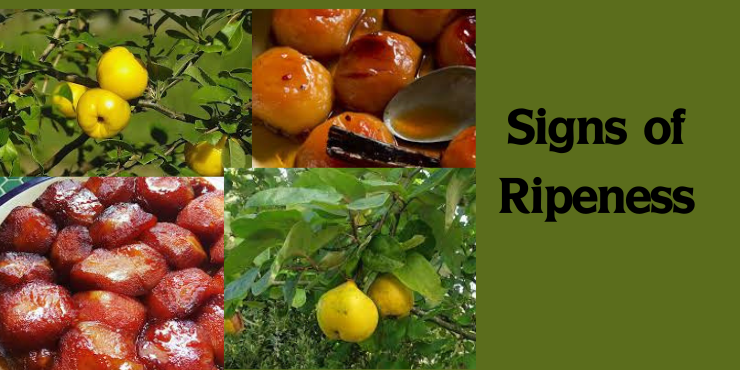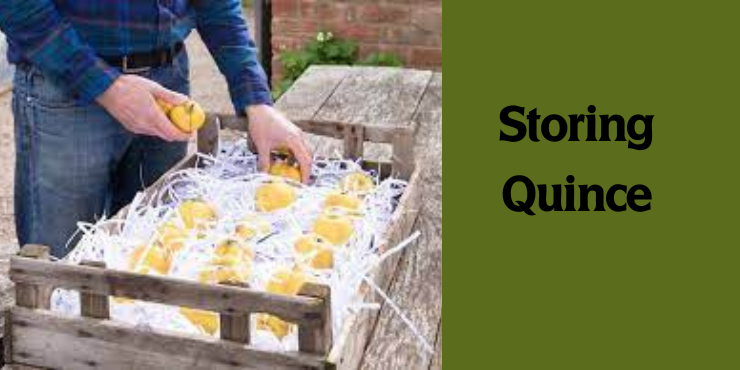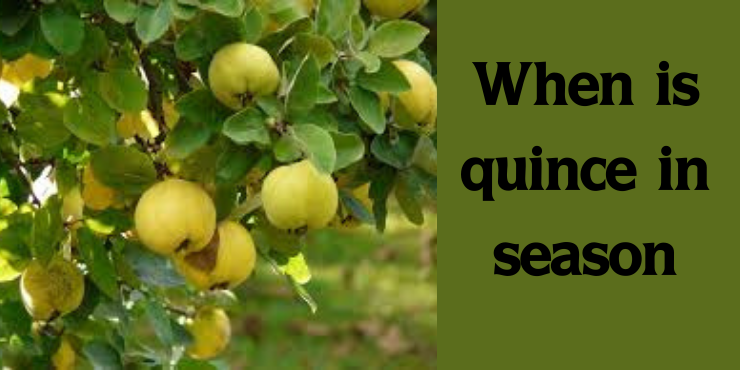Quince in season, scientifically known as Cydonia oblonga, is a fruit that has captivated the senses of food enthusiasts and health-conscious individuals alike. From its captivating aroma to its vibrant color, quince stands out as a symbol of taste and refinement. Quince in season, often referred to as the “golden apple,” is a unique and enchanting fruit that has been enjoyed for centuries.
With its distinct aroma and flavor, quince has found its way into various culinary traditions around the world. If you’re curious about the quince season and how to make the most of this delightful fruit, you’re in the right place. In this article, we’ll explore everything you need to know about when quince is in season and how to savor its exceptional taste.
Quince in season: A Brief Overview
Quince in season is a deciduous fruit that belongs to the same family as apples and pears. Native to the Middle East and certain parts of Asia and Europe, this fruit has a long history of cultivation for both culinary and ornamental purposes.
Its cultivation in different parts of the world, and its unique features such as its yellow color, fragrant aroma, and gritty texture.
The Seasonality of quince in season
Quince is typically in season during the late fall and early winter months, usually from October to December. This limited window is eagerly awaited by chefs, home cooks, and food lovers who appreciate the unique qualities of quince in season. Learn about the optimal time for picking quince, as well as the factors that can affect its flavor and texture. Discover the best ways to store and preserve quince during off-seasons, ensuring a year-round supply of this unique and delicious fruit.
Signs of Ripeness

This guide also highlights the importance of taste in determining ripeness. Explore the difference between eating raw quince and cooking with it, as well as the optimal texture for each. Gain insight into various recipes and cooking techniques that showcase the flavor and unique characteristics of quince. Ripe quinces often exhibit a bright yellow color with a hint of green. They should feel firm to the touch and give off a strong, sweet aroma. When sliced, the flesh should be creamy white with a slightly granular texture.
Harvesting Quince
Quince is a seasonal fruit that is harvested during the fall months, typically between late September and early November. The process of harvesting quince involves carefully picking the fruit from the quince tree when it is fully ripe and ready to be enjoyed. The timing of the harvest is crucial, as quince should not be picked too early when it is still hard and unripe, or too late when it may have become overripe and mushy.
This delicate balance ensures that the quince is at its peak flavor and texture. Harvesting quince also requires patience, as the fruit may need some time to ripen further after being picked. Once harvested, quince can be used in a variety of culinary applications, such as making jams, jellies, preserves, and desserts. Its unique taste, which is often described as a combination of apple, pear, and citrus flavors, makes quince a sought-after fruit during its limited season. So, when quince is in season, make sure to seize the opportunity to enjoy this delicious and versatile fruit.
Storing Quince

Quince is often known for its yellow color and tart taste, and is commonly used in various culinary dishes and for making jams, jellies, and preserves. This comprehensive guide provides detailed instructions on how to store quince by following simple steps such as selecting ripe fruits, cleaning and preparing them, and using different storage methods like refrigeration, freezing, and canning.
Quinces have a relatively short shelf life compared to other fruits. Store them in a cool, dry place, and use them within a few weeks. To extend their lifespan, consider making preserves or jams.
Quince Preserves: A Timeless Classic
A Timeless Classic is a delightful exploration into the world of preserving quince. This elegant fruit has been cherished for centuries and remains a timeless classic in the culinary world.
Making quince preserves is a cherished tradition in many cultures. The process involves simmering quince slices with sugar and water until they turn into a fragrant, reddish preserve that pairs wonderfully with cheese and bread.
Quince and Cheese Pairing: A Delightful Appetizer
Quince in season and cheese pairing is a delightful appetizer that combines the subtle sweetness of quince with a variety of delectable cheeses. Quince, a fruit similar to a pear, has a unique, aromatic flavor that compliments the richness and creaminess of cheese. This pairing is a perfect blend of sweet and savory, creating a delightful balance of flavors that is guaranteed to please your taste buds.
The quince in season adds a touch of brightness and tanginess to the rich and smooth texture of the cheese, creating a heavenly combination that is sure to impress your guests. Whether you prefer a soft and creamy cheese like brie or a sharper, aged cheese like cheddar, there is a perfect pairing for every cheese lover. This appetizer is not only delicious but also visually appealing, making it a great addition to any party or gathering. So, if you’re looking for a unique and delightful appetizer to wow your guests, quince and cheese pairing is the perfect choice.
Quince-Infused Desserts: Adding a Sweet Twist
Another fantastic way to infuse desserts with quince in season is by making a quince jam or jelly. The fruit is cooked down with sugar and spices, resulting in a thick and flavorful spread that pairs beautifully with buttery toast, scones, or even cheesecake. Quince jam can also be used as a filling for thumbprint cookies or as a layer in a cake.
For those with a passion for baking, quince can be added directly into cake batter or cookie
Quince in season can be transformed into delectable desserts like tarts, pies, and crumbles. Its unique flavor adds a delightful twist to traditional sweets.
Health Benefits of Quince
Quince in season isn’t just a treat for the taste buds – it also offers a range of health benefits. Packed with dietary fiber, vitamins, and antioxidants, quince contributes to digestive health and immune support.
Quince in season is also a great source of dietary fiber. A single serving of quince provides a significant amount of fiber, which can aid in digestion and prevent constipation. Fiber is also known to promote healthy cholesterol levels and reduce the risk of heart disease.
This fruit is also known for its anti-inflammatory properties. The antioxidants found in quince can help to reduce inflammation in the body, which can lead to a variety of health issues such as arthritis and heart disease. Quince has also been found to have antibacterial properties, which can help to protect against infections and promote wound healing.
Exploring Quince Varieties
Quince in season is a unique fruit that is part of the Rosaceae family, known for its distinct shape and bright yellow color when ripe. In this article, we explore various quince varieties, examining their flavor profiles, texture, and recommended uses. While the classic yellow quince is the most well-known, there are other varieties with different colors and flavors. Pink and orange quinces bring their own unique characteristics to the table.
Cultural Significance of Quince
Quince n in season is a fruit that holds significant cultural symbolism in many parts of the world. Known for its vibrant yellow color and distinct aroma, the cultural significance of quince can be traced back to ancient times.
In many Mediterranean and Middle Eastern cultures, quince is associated with love and fertility. The fruit is often given as a gift to newlyweds or used in wedding ceremonies as a symbol of prosperity and happiness in marriage. It is believed that eating quince can help strengthen relationships and bring good fortune to couples.
Quince in season also plays a prominent role in Greek mythology. According to the ancient legend, the golden apple that Paris awarded to Aphrodite, the goddess of love, was actually a quince. This mythological connection further adds to the cultural significance of the fruit as a symbol of love and beauty.
Conclusion
In conclusion, the quince season is a time of culinary inspiration and creativity. From its humble origins to its cherished place in kitchens worldwide, quince continues to captivate our senses and tantalize your taste buds. Whether enjoyed in preserves, desserts, or paired with cheese, quince in season offers a quince in season and delightful experience that should not be missed.
FAQs About Quince
- 1 Can you eat quince raw?
- Quince is usually too hard and astringent to be enjoyed raw. Cooking or baking brings out its delicious flavors.
- 2 What does quince taste like?
- Quince has a unique flavor profile that combines sweetness and tartness, often with floral and citrus notes.
- 3 Can you eat the skin of a quince?
- While the skin is technically edible, it’s often tough and bitter. It’s best to peel quince before using it in recipes.
- 4 How can I use quince in cooking?
- Quince can be used in a variety of dishes, from jams and jellies to savory meat glazes and desserts.
- Is quince related to apples and pears? Yes, quince belongs to the same botanical family as apples and pears.
